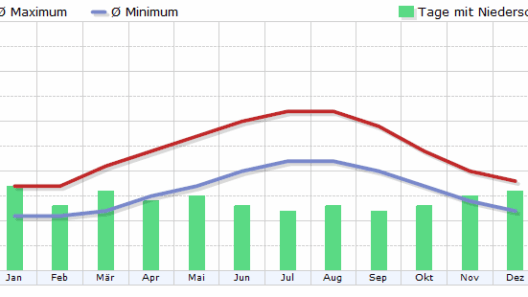The Australian climate is a tapestry of contrasting environments, shaped by its vast geography, diverse ecosystems, and varying meteorological phenomena. From the scorching outback heat to the refreshing coastal breezes, the climate across Australia is as multifaceted as its landscapes. But how often do we ponder this climatic diversity while enjoying the sun on a beach or traversing the rugged wilderness? The truth is, these climatic extremes pose unique challenges that demand our attention and action.
Australia is the sixth-largest country in the world, and its climate is predominantly influenced by three key factors: latitude, elevation, and proximity to the ocean. Each region exhibits distinct climatic characteristics that morph dramatically from one area to another. This variability creates an intricate interplay between weather patterns, seasons, and ecological systems. One might wonder, what are the implications of such varied climate zones on biodiversity, agriculture, and urban living?
Starting with the notorious Outback, which bespeaks the quintessential Australian image of dry, barren lands and relentlessly high temperatures. The Outback comprises arid and semi-arid zones, showcasing some of the hottest temperatures on the planet. Here, average summertime highs can soar above 40 degrees Celsius (104°F). These conditions pose considerable challenges for flora and fauna; many species have evolved adaptations that allow them to survive in this harsh environment. Succulents, like the iconic spinifex grass, and fauna such as the red kangaroo exhibit unique behaviors and physiological traits to endure extreme heat and scarce water supply.
Transitioning towards the coast, the climate begins to shift as oceanic influences come into play. Coastal regions experience a temperate climate characterized by milder winters and cooler summers compared to the interior. The invigorating sea breezes, shaped by the Southern and Indian Oceans, make these areas particularly hospitable. Cities like Sydney and Melbourne enjoy moderate rainfall, which supports lush vegetation and rich biodiversity. However, urban development in these appealing coastal zones can elevate issues such as pollution, habitat loss, and increased temperatures, challenging the sustainability of these lifelines.
Diving deeper into the climatic zones of Australia, one must consider the subtropical zones in the northeast, which are known for their lush rainforests and high humidity levels. These areas receive significant rainfall, particularly during the summer months, creating verdant landscapes that stand in stark contrast to the parched Outback. The Great Barrier Reef, a UNESCO World Heritage Site, thrives in this climatic environment, becoming a pivotal point of interest for both ecological study and tourism. However, the increasing instances of coral bleaching—attributable to rising sea temperatures and pollution—underscore the urgent need to protect these fragile ecosystems.
Conversely, the south of Australia experiences a more temperate oceanic climate, featuring robust agricultural output thanks to fertile soils and favorable weather conditions. Regions like Tasmania benefit from a cooler maritime climate that fosters berry production, viticulture, and various forms of grain cultivation. Yet, with this agricultural bounty arises a pressing challenge—climate change. Alterations in seasonal patterns and the increasing frequency of extreme weather events call for innovative approaches toward sustainable agriculture and food security.
As we contemplate Australia’s climate, we must also acknowledge the stark contrast presented by polar climates in the Australian Antarctic Territory. This region experiences severe cold and high winds, marking a significant departure from the heat of the Outback or the temperate coasts. Researchers in the Antarctic are increasingly encountering issues related to melting ice and shifting weather patterns. What does this mean for global sea levels? The consequences of the changing climate in this remote area extend far beyond Australia’s borders, echoing a collective responsibility to address these global climate phenomena.
The interplay between Australia’s varied climates also raises important questions regarding the impact of climate change on Indigenous cultures and practices. Indigenous Australians have a profound connection to the land and have long thrived in harmony with its natural rhythms. However, as climatic variables shift, traditional pathways of sustenance and cultural expression are increasingly threatened. It creates a trifecta of challenges: how do we honor this rich cultural heritage while also addressing the pressing environmental imperatives posed by climate change?
Moreover, forested areas, including the Kangaroo Island ecosystems, have faced devastating wildfires in recent years, a phenomenon exacerbated by prolonged drought and rising temperatures. The charred landscapes post-fire are stark reminders of nature’s ferocity and the vulnerabilities that climate change engenders. This challenges not only urban planning but also disaster response strategies crucial for safeguarding both life and biodiversity.
In conclusion, Australia’s climate is a mosaic of extremes, each presenting its unique set of challenges and opportunities. From the arid expanses of the Outback to the temperate shores of the coastal regions, the interdependence of climate, ecology, and human activity underscores an urgent call to action. How do we collectively navigate this complex web of climatic challenges while safeguarding the diverse ecosystems that define Australia? The answer lies in adopting innovative, sustainable practices reflecting our commitment to environmental stewardship and intergenerational equity. Only through collaborative efforts can we aspire to ensure that Australia’s climatic beauty endures for future generations to appreciate and cherish.






